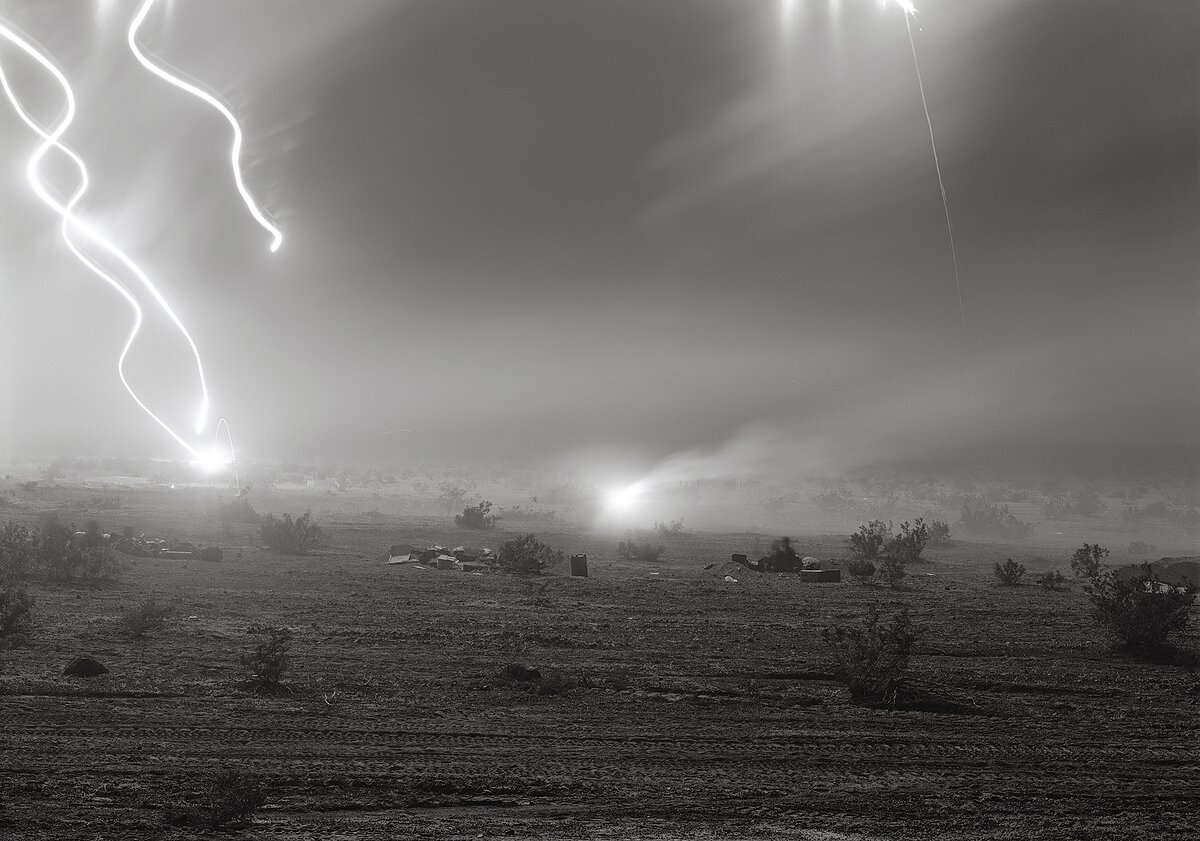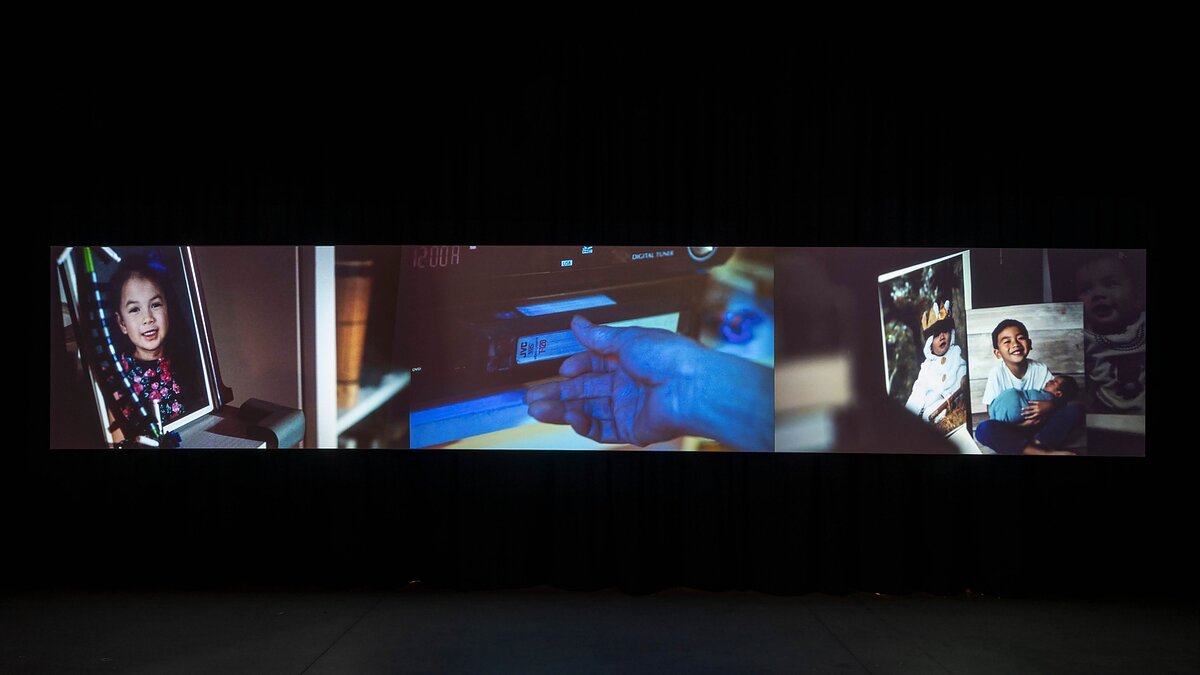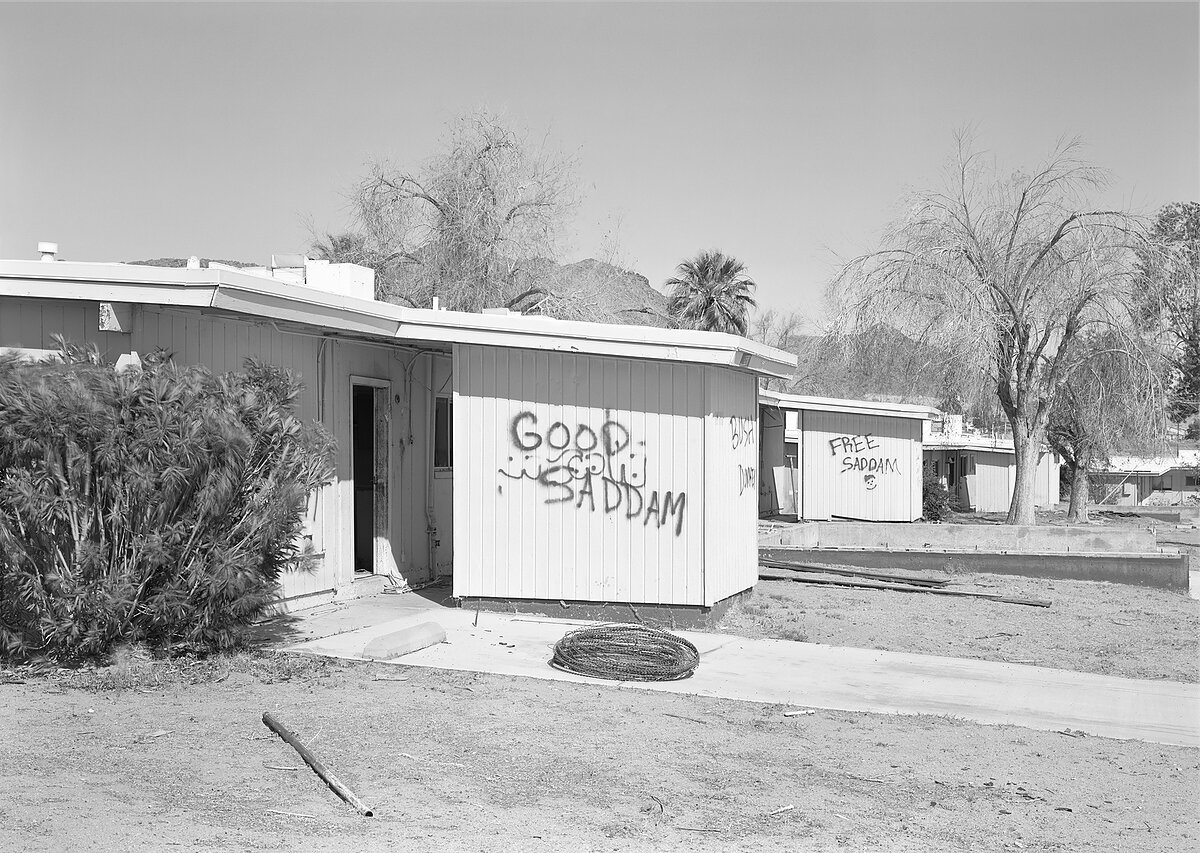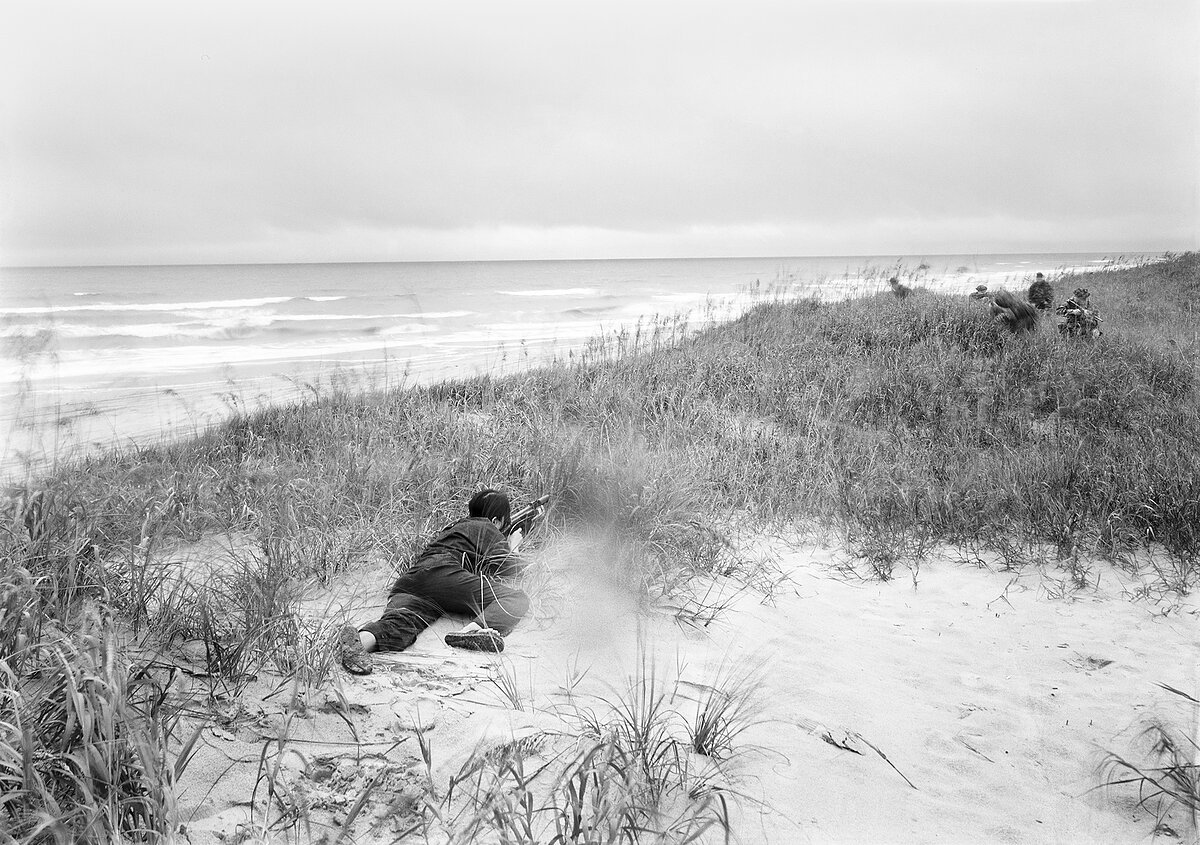In the Shadow of War
I was still a child when the Twin Towers fell, and still a child a year later, when they took us into a classroom to explain why we were at war. And farther back—
For a long time, despite knowing part of the history that brought me here, I thought of myself as the daughter of Vietnamese immigrants. Only in the last years have I been able to internalize the word “refugee.”
Everything I am is in part because, once upon a time, my paternal grandparents fled the American War in Vietnam. My grandfather, a former ambassador for the South Vietnamese government, told me the story of his escape from Saigon, how on the day before the city fell, he sat and paced and slept in a room with other government officials, waiting for the phone to ring, waiting for a way out. This story rests in a collection of others—all stories which I cannot fully understand or relate to, but which I carry because I feel I must.
Watching Cathy Linh Che and Christopher Radcliff’s three channel film Appocalips (2023) at The Shed’s current Open Call exhibition, the legacy of my grandfather’s stories came into greater clarity. In what sounds like a relaxed conversation at home, Che’s parents recount their escape from South Vietnam, their experience playing extras on the set of the 1979 film Apocalypse Now, and their lives in the US.
The pair describe these events calmly, often laughing over little details, such as when a fellow refugee and extra hid her pregnancy from the film staff so she could work, surprising everyone afterwards. Their story and memories stand as ballast to the broader, American-told story of the war in Vietnam, as made canonical by films like Apocalypse Now.
In his book, Nothing Ever Dies: Vietnam and the Memory of War, novelist Viet Thanh Nguyen writes about the industry of memory: “To mistake memory as just a commodity for sale, or information to be transmitted by experts, would be like considering a gun and its manufacturer… to be simply products of an arms industry. Arms industries are only the most visible parts of a war machine. In war machines, the bristling armaments are on display, but more important are the ideas, ideologies, fantasies, and words that justify war, the sacrifices of our side, and the death of others.”
By controlling what is remembered about war, the myths of war are allowed to live on. Appocalips attempts to balance an unequal narrative, offering another perspective on one of the most iconic and remembered films to emerge from the war in Vietnam, which though intended to be critical of war, contains scenes which Coppola himself admits have been used to “rev people up to be warlike.”
It’s ironic to think that in fleeing war, Vietnamese refugees came to one of the most bellicose nations in the world. With this in mind, An-My Lê’s body of work, currently shown in the exhibition “Between Two Rivers” at MoMA, feels radical in its ambition to tackle the vast mechanism of conflict that brought her to the US.
As Roxana Marcoci, MoMA’s senior curator of photography, writes, “[Lê] focuses on military exercises (“pre-enactments” of future combat) and war reenactments (wistful restagings of past conflicts), and on how these simulations collapse the distance between past and present actions and perpetuate a mental state of war.”
In Lê’s projections from her series “29 Palms,” shot between 2003-2004, US soldiers preparing for Iraq stand outside in the harsh sun of the California desert, most likely receiving instructions. The camera lingers on the scene, sometimes coming closer to gaze at individual faces. The soldiers are, for the most part, young and in their 20s, their faces unlined. There’s something haunting in thinking about these soldiers now, of what they’ve seen and done, and how it’s changed them.
In the same chapter about memory, Nguyen calls my generation, born in the ‘80s and ‘90s, a wartime generation. Yet, he notes, “For an American society that goes to war every couple of decades, the distinction among prewar, wartime, and postwar is blurred. Rather than a discrete event, war is a continuum… a dull hum of white noise.” While so much of Vietnamese American art and writing has been spent processing and reflecting on the war and how we came here, works like Appocalips and “29 Palms” raise broader questions that go beyond the morality of war to how its presence has affected generations of refugees, soldiers, and even those who have not been directly involved.
Even Sun Tzu admitted, “There is no instance of a nation benefitting from prolonged warfare.” Yet to be American is to live with that perpetual, nerve-jangling feeling that a new conflict, or worse, a new war is imminent. Gaza, Ukraine, and Afghanistan, to name just a few over the last three years.
Safe, warm, and privileged, the only thought that hangs over me at night is that inevitably, it will begin again. Another conflict, another wave of refugees, another attempt to excise memory.
—Rachel TonThat is a Vietnamese-Chinese American artist and writer working with narrative structures around themes of possible futures, memory, and space-time.




